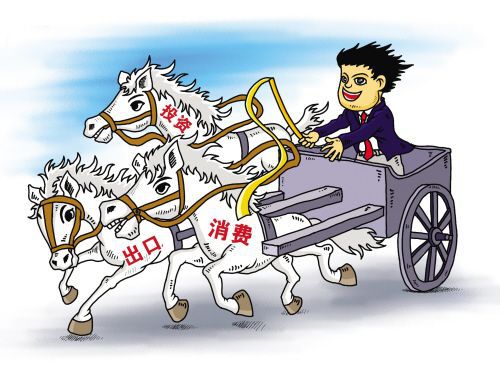Fiscal Reduction Reshaping Foreign Trade "Carriage"
Export tax rebates are a burden for local governments, not only stimulating foreign trade exports, but also making exports more efficient and ensuring the income of foreign trade companies. “Exports are closely related to domestic demand. The large number of employed people behind China’s foreign trade directly affects the domestic consumer market. Related to imports." Linen Tencel Fabric,Printed Tencel Fabric,Tencel And Linen Fabric,Linen Tencel Blend Fabric Shaoxing Yuantiao Imp&Exp.,Ltd. , https://www.jeesun-fabric.com
On the eve of Premier Li Keqiang’s report on government work, on March 3, the State Council issued the “Circular on Issues Concerning the Improvement of the Export Tax Rebate Burden Mechanismâ€, specifying that the export tax rebate (including the value-added tax for export goods and business tax) shall be effective from January 1, 2015. The VAT refund tax rebate will be borne by the central government, and the local export tax rebate base for 2014 will be fixed on the quota. The central government shall no longer apply incremental refunds to local consumption taxes, and instead use the 2014 consumption tax return as the base. The quota is returned. The Ministry of Finance is specifically responsible for the verification of the base number for local export tax rebates and the central government's return to the local consumption tax base.
China's export tax rebate system began in 1950, but continued implementation was after the reform and opening up, a relatively complete and systematic export tax rebate system was formed around the 1990s.
It is understood that in the past 10 years, the state has gradually adjusted the share of the central and local governments on export tax rebates. Starting from 2004, the export tax rebate target for 2003 has been used as the base, and the amount of tax refund for the super-baseline part has been The local government will bear the ratio of 75:25. Starting from 2005, the export tax rebates for the super-basis will be adjusted, and the ratio between the central and local governments will be adjusted to 92.5:7.5.
Although the proportion of the burden is already less than 10%, it is not a small expense for places with large foreign trade exports. Taking Jiangsu Province as an example, statistics show that in 2014, Jiangsu Province handled a total of 184.25 billion yuan in export rebate (exemption) taxes.
Due to the unbalanced economic development, China’s foreign trade is highly concentrated in the coastal provinces. In fact, many of the exported goods come from other regions. They are only exported from Customs along the river, but due to the foreign trade data being counted in the export area, the export tax rebates are part of the burden. It is the responsibility of the local fiscal authorities, which undoubtedly aggravates the financial burden in these areas.
“Increase the burden on the coastal areas has also affected the investment attraction in the Mainland, and will also breed some regulatory issues.†Xing Houyuan said that due to the export of goods from other places, customs supervision is difficult, which opens the door to cheat export tax rebate. “Because it is a remote place, Longer check cycles will affect the cycle of export tax rebates."
When the reporter interviewed foreign trade enterprises in Guangxi, he also learned that due to the need to respond to customs inspections, some enterprises that do export in other places kept all high-speed toll receipts and invoices for a long period of time, and the inspections took a long time. During the inspection period, they could not be refunded, greatly increasing the number of companies. the cost of.
Xing Houyuan believes that because a certain percentage of the profits of foreign trade companies come from export tax rebates, and even from partial export tax rebates, the timely and full refund of taxes is a matter of life and death.
In accordance with the procedures, in handling export tax refunds, enterprises need to provide a variety of information such as ***, export sales invoices, settlement of water orders or foreign exchange notices, product taxation certificates, export verification certificates, etc., and they need to pass customs. , taxation and other aspects of the review. If the national tax department has doubts about a certain transaction, it will send a letter to the company to investigate and verify the authenticity of the above information. In the enterprises interviewed, the cycle of export tax rebates varies from one month to two years.
In fact, China’s export tax rebate system has always been a “barometer†of exports, and it is also an effective fiscal system for regulating exports. In the different stages of economic development, the list of export tax rebates is changing, and the export tax rebate rate is also changing.
